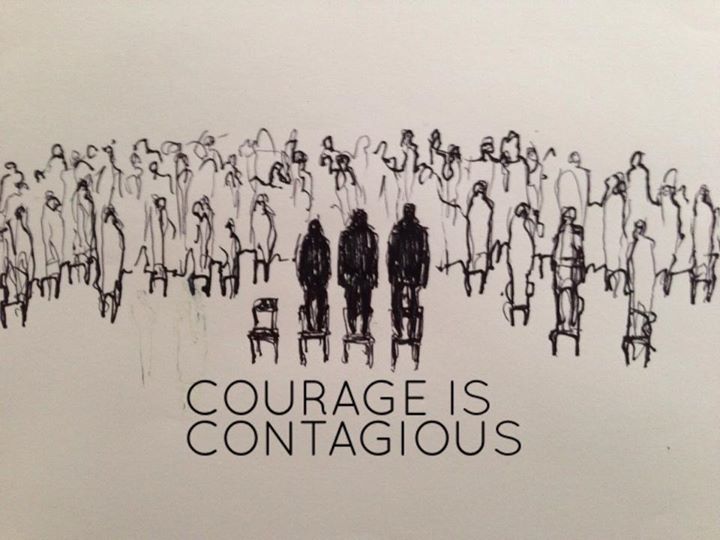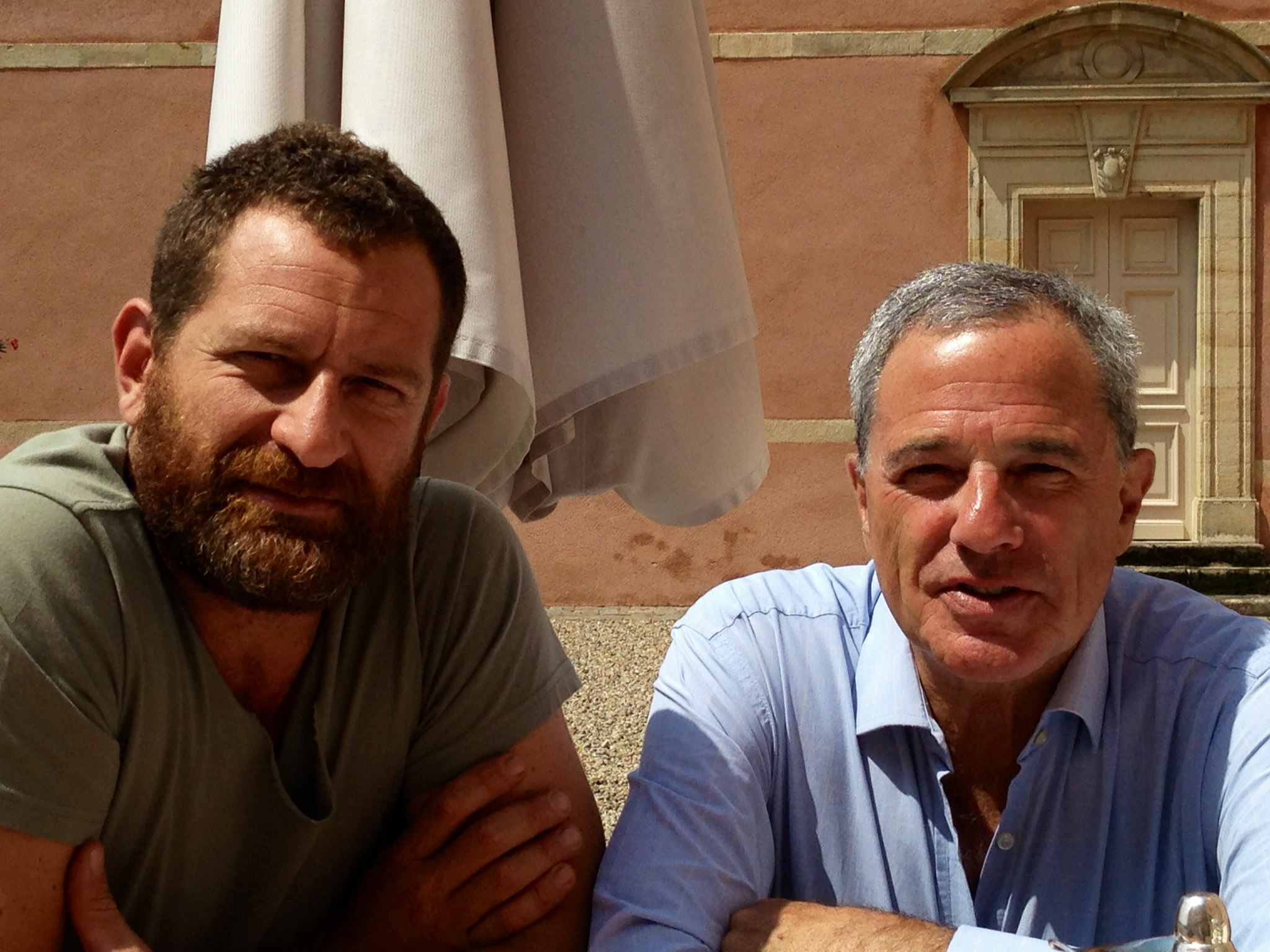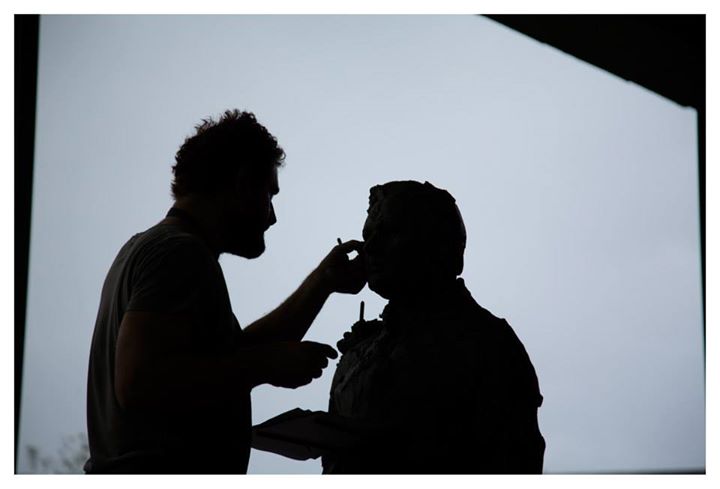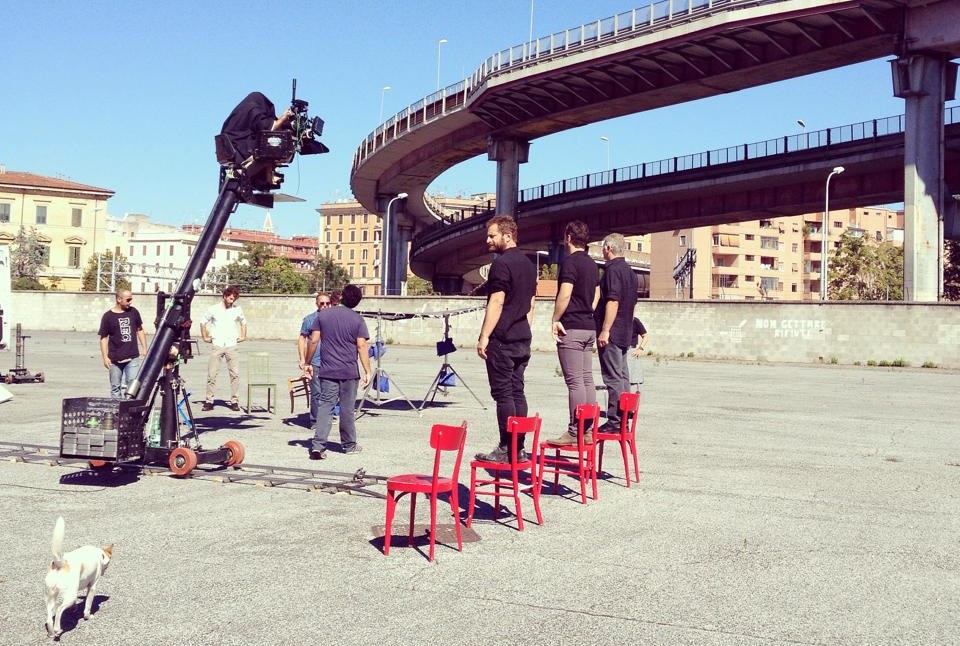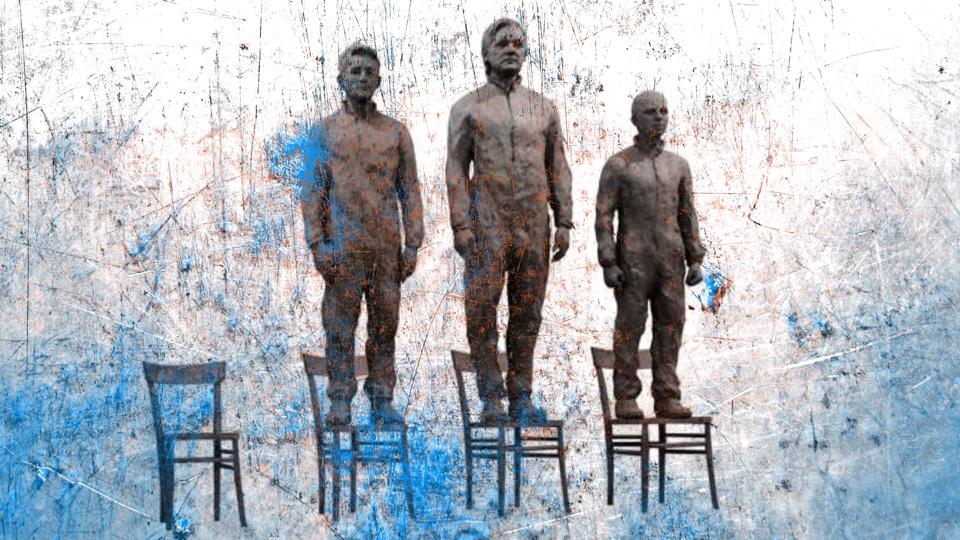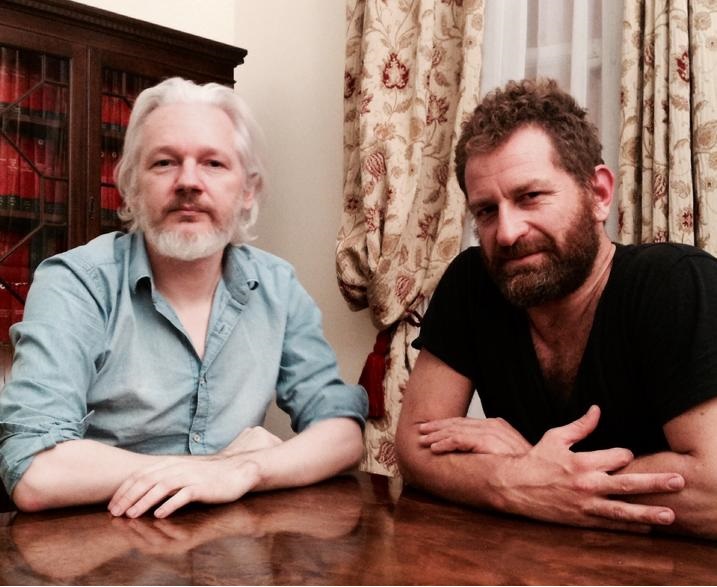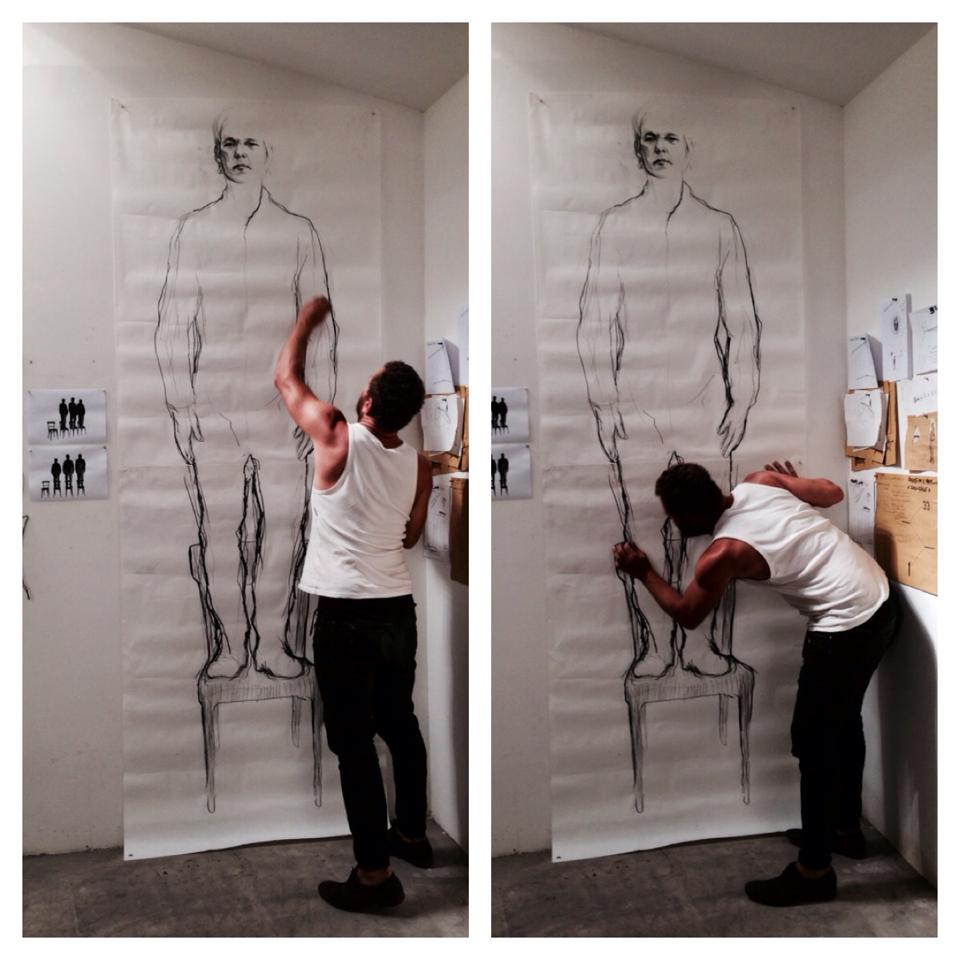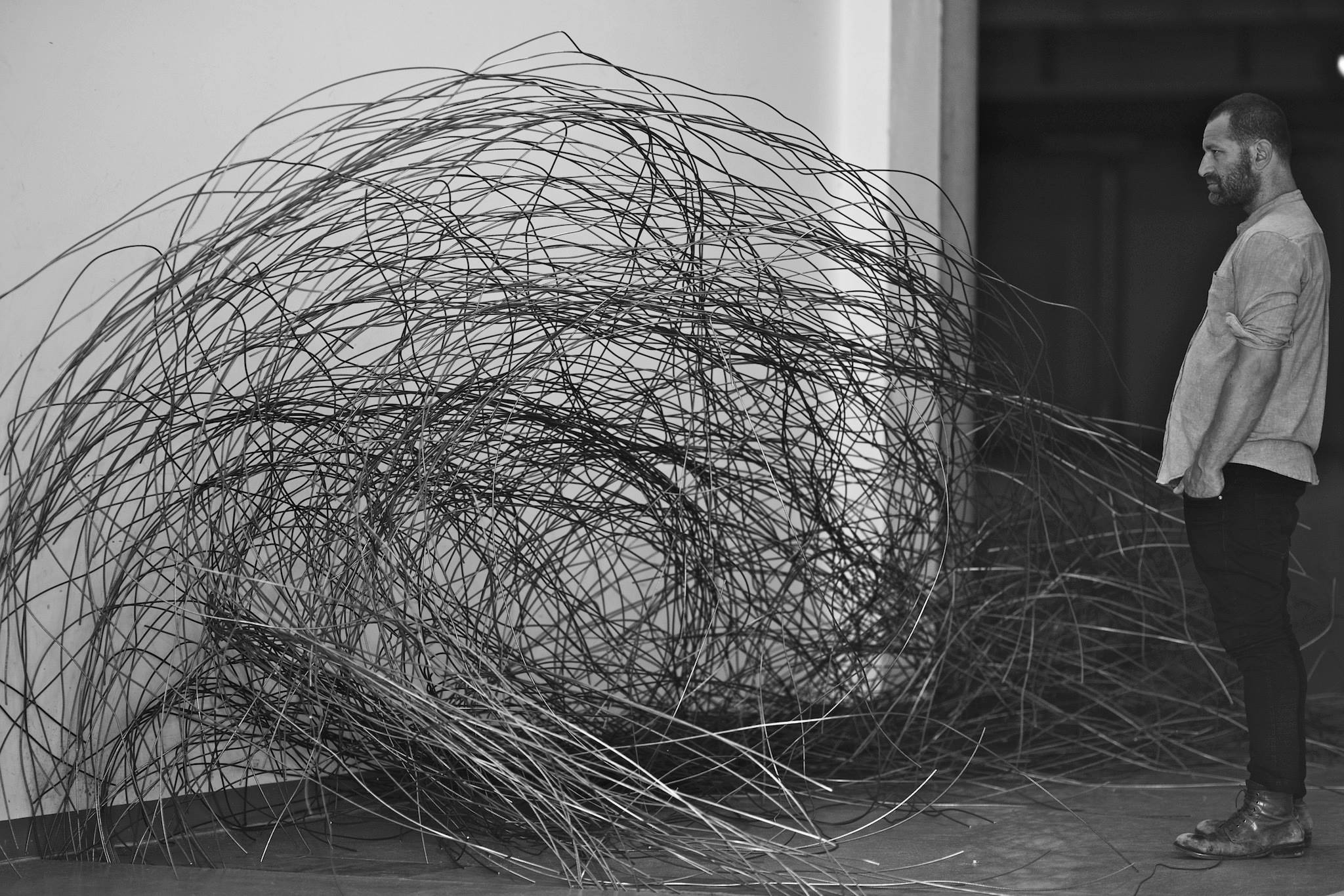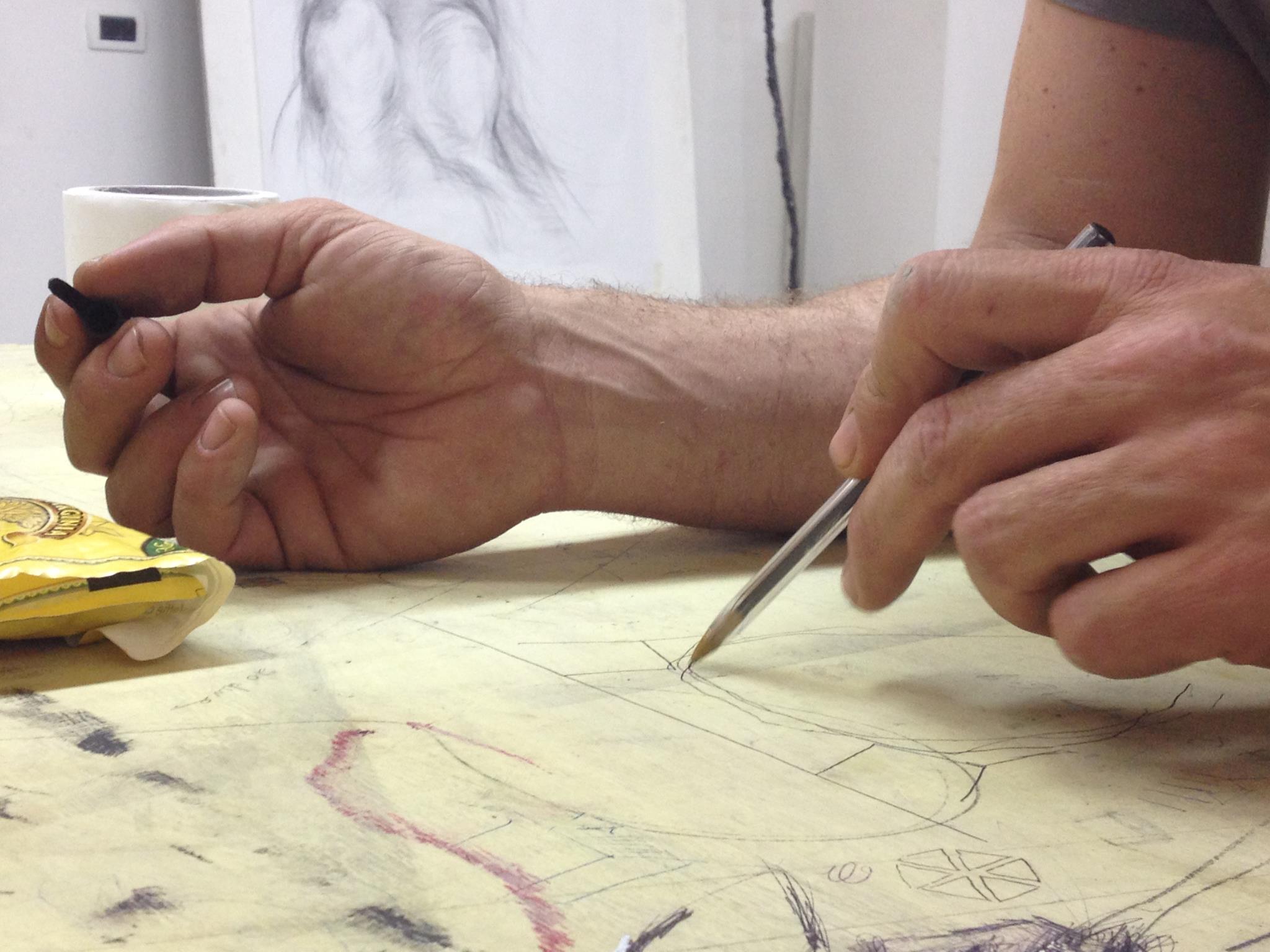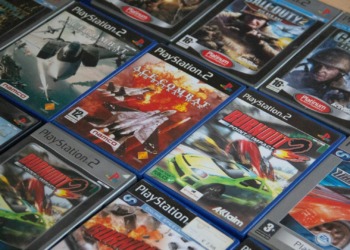“Anything to Say?” is a public art project conceived by the well-known American journalist Charles Glass and internationally recognized contemporary Roman artist Davide Dormino. The project speaks about the human experience of courage and the ability to see reality from different perspectives. Freedom of information and taking a stand on what we, as human being believe, is also a central theme. As part of the ethos of the project the artist has decided to finance it through crowdfunding in an Indiegogo campaign that will end on March 2. From the standpoint of Contemporary Art, this is an important project. This is why Impakter is pleased to bring to our readers an exceptional interview with this highly talented artist in his studio that reveals what inspires him and that takes us through the journey of his creative process.
[Disclaimer: the views and opinions expressed in this article are those of the person interviewed and do not necessarily reflect the policy or position of the Impakter editorial board.]
Davide Dormino greeted us with a big smile, a classic expresso and then we got straight into talking about his latest project.
Q: What is “Anything to Say About”?
A: This project is composed of three fundamental elements. It is an artistic, political and philosophical project. The artistic element is evident because it is a sculpture. Obviously, I am an artist and I don’t want to get too involved into the political realm, but I understand that this project has a strong political component directly correlated to the subjects chosen for the piece. The gesture, which is the philosophical aspect of the project, however, is the main element represented by these three figures standing up on three chairs, leaving one empty for the audience to participate.
Why are the subjects standing up? Because by standing up, they are are looking at things from a different point of view and through their action they are trying to open up a new horizon on how to look at our current reality. After the revelations of wiki-leaks the world will never be the same.
This sculpture is an invitation, to get out of your comfort zone, to utilize the chair not as a means of comfort but as a means to raise yourself up, to stand up to your ideals. This sculpture celebrates these three characters and especially celebrates their courage. It invites us all to experience courage and stand up on the chair next to them. The theme of the piece is universal. It is a gesture that transcends time because the experience of courage is timeless. The strength of this project lies on its straightforwardness to represent these characters in a very simple way – standing up, straight, on top of a chairs while transmitting a strong message.
The piece also has dualities. On one hand, the sculpture can be seen as a public execution, the moment when someone is hanged and a rope is put around their neck and the chair is taken away. On the other hand, I hope it helps people find clarity for themselves, especially in this historic moment. The world is always divided in pros and cons, and in the case of this piece, the audience can feel both ways. There are people that are in favor and there are people that are not. It’s very extreme. There is also pride, there are those who prefer the status quo. They don’t want to rock the boat. They don’t want to ask themselves questions and they prefer to “not know” the truth. This project instead is about knowledge, it’s about wanting to know, about wanting to be. It’s about having the courage to inform ourselves.
Q: As an artist, what does this piece represent for you?
A: Throughout history, great revolutionaries and heroes were not sitting down. They stood up. With this project, I want to celebrate the gesture of standing up. I like the concept that the world can welcome three modern revolutionaries in its public places. For example, this is how Italy has hosted Garibaldi and Latin America Che Guevara.
This is a moment in history in which we can no longer compromise. Art has a role, a responsibility to take a stand because the fundamental role of an artist is to help people change their point of view. Public art in this sense has a supreme value because it speaks to everyone. If you put a sculpture in a square you know everyone will see it, adults and children. Art has the function of helping people grow. This can be transmitted not only through a vision or a provocative act but by creating something that makes people question themselves. When art doesn’t do this, it has only an aesthetic function. And I feel art has a supreme value exactly because of this. An artist should be a revolutionary, a person who is sensitive to that which is happening in the world, and is able to translate it and make it understandable to others.
Q: Why did you choose these particular three subjects?
A: This project was born because a year ago I was contacted by the American journalist Charles Glass, a person I met a few years ago. As a journalist, Glass has an important curriculum and he told me that he wanted to do a project based on WikiLeaks – on the figures of Assange, Snowden and Manning. He asked me if I would like to collaborate with him on this project and I told him: certainly yes! At that moment in my art, I wanted to express an idea, a gesture that had to do with courage. And this is exactly what he was proposing to me. And after a week of thinking about it, I got to work.
Q: How did you get inspired to create this project, what was your creative process?
A: When I started thinking about this project, I made a spontaneous drawing of four chairs with these three men standing, and that was the starting point. As it often happens to me, I don’t know how this drawing came about. After a few minutes, I thought to myself, it’s obvious! It is because I hate chairs. Because I don’t like to sit down, if I sit down I fall asleep.
Then I started conceptualizing the chairs. A chair is a place where one sits down, where once feels comfortable; it’s a place where one sometimes thinks. I am not a thinker, I am a doer. I do and after the fact, I understand the reasons behind my actions. I also got inspired after I discovered “speaking corners” in London and New York. They are places where you stand up on a chair to express yourself by saying something you need or feel like saying. In addition, I also discovered “Oh Captain My Captain”- from the film The Dead Poet’s Society, where the professor asks his students to stand up on their chair and see the world from a different point of view.
I also decided to reconfigure the personas by dressing them in overalls. This makes it difficult for the viewer to distinguish whether they are workers or soldiers in uniform. The characters could be engineers or war heroes. I also wanted to portray them with work boots because a person that stands up on a chair with shoes is “impolite”. If you were to change a light bulb at home, for instance, you would take your shoes off and you would get up barefoot on the chair. These three characters have been “impolite” with respect to the world because they revealed secrets – they revealed the truth. This is what came to my mind and this is exactly how I created the piece.
But even before I became conscious of all of this, I had asked myself: when is it that people get up on a chair ? If you are in a restaurant, perhaps you get up on a chair because you want to make a toast. But you also get up on a chair when you want to say something. And what does this mean? You get up from a position of comfort and put yourself in a not necessarily uncomfortable position but in a more precarious one where you expose yourself and everyone can see you. Thus, if you have something intelligent to say, everyone listens to you and everyone can see you. If on the other hand, you have nothing intelligent to say, you risk making a fool of yourself. This is where the conceptualization of the project emerged.
In this project, probably 80% of the time and energy was dedicated to the organization and development of it as opposed to the sculpture itself. I made the sculpture in ten days, but before this I had to put a lot of time in preparation for its creation. Maybe the making of the sculpture represents 10% of the worktime and energy spent all together.
Q: Why Bronze?
A: Because monumental sculptures are made with bronze. A marble statue, for instance, is more easily broken and bronze is indestructible. Bronze is a an amalgamation of copper and tin and when fused you have the impression of seeing a volcano that is erupting. The metals become liquid. The fusion of bronze is an extraordinary and very antique process. This is a piece in which the relationship of form and content is in perfect equilibrium and this is what fascinated me about doing a bronze sculpture.
Q: Did you want to confront the old with the new?
A: As I told you, this idea emerged in a very spontaneous way. I am a sculptor and as an artist I manifest things spontaneously. I don’t ask myself too many questions beforehand. The language I used to represent this piece is traditional. It can seem like a piece from the 1800’s, with the type of modeling that I used, but the concept is contemporary because it is the result of a modern issue.
Q: With your work and with this project in particular, what kind of impact would you like to have on a personal level and in general?
A: Personally, I am not sure what will come out of this project. Anything can happen… I could even get killed. But I know that this artwork is one that is perceived as uncomfortable (outside the status quo) in its simplicity, and I am already feeling the repercussions. I know this but I am also trying to be courageous. The impact that I will experience from creating this piece will come after the fact, I am not sure what it will be.
What I can tell you is what I would like to happen to me as a consequence of this project. I would like for this piece to go around in the most important cities in the world. I would like for the presidents and the populations of these countries to be willing to welcome this sculpture for 2-3 months in their city so that people could interact with it. I would like for flash mobs to be organized based on this piece and for people around the world to unite in squares and stand up on chairs. This is probably a romantic idea that I have but I believe in it.
In life sometimes all it takes is to stand up a few centimeters higher to change the point of view and see things differently. I would like for everyone to be able to experience and remember this sensation. I don’t want for people to stand up on the fourth chair just to take a selfie or to joke around. I know this will most likely happen. But what I really want is for people to stand up, as a form of ritual, even though in reality it should be a norm to take a stand. In life when we take action in a conscious manner, action starts to brew into more action and this serves as a catalyst to change certain behaviors. We, as human beings, make up the world and we have the power to decide which route we want to take, where we want to be and in which way we want to stir the world.
//
Q: Would you like this piece to have a more global impact?
A: Yes. I would like for this piece to fertilize the places that welcome it. In cities there are public spaces dedicated to important events. I would like for this piece to be like a flag that creates an impact. This is an artwork for everyone. I want this piece to stimulate all those that come in contact with it to think about the idea of courage.
Naturally, other than courage, the central force of this piece is the message of freedom of information as opposed to just free thinking. Obviously, state secrets exist and they are known only by secret service agencies. However, it is important to understand the truth as a population because all of this information conditions our world and sometimes it takes us in a different direction. All of the events that have come to light from 9/11 to wikileaks have revealed all kinds of information, such as corruption linked to the political elections of African countries to name one. And all of this information has been manipulated by power. We probably already know these facts, but only because someone – the media, government officials – have told us how these things function. Therefore, we should expose these kinds of ideas and truths. The protagonists of the sculpture have sacrificed themselves, for their own reasons that I am not interested in. However, they sacrificed themselves to expose certain truths.
Q: That is interesting: I note that you feel the “protagonists of the scultpure have sacrificed themselves” but for reasons that you are not interested in. Do you believe Art can change the world?
A: Absolutely yes. Art has the capacity to help people grow and work through and express repressed emotions. As I said before, if we are the world, certainly art can change the world. It’s like the saying that Beauty will save the world… and it’s true. If you live in a place that is harmonious, you can think better, live better. You are able to give back more. We grow confronting ourselves and our beliefs, there is no other way. You are confronted with beauty because beauty makes makes you see things from another point of view. On the other hand, beauty can also assume dangerous forms but we have to take the risk. This is what we have been doing since the beginning of time. Art is the ultimate expression of human beings. It is inside of us.
Q: Do you think people understand the message you are trying to convey through your sculpture?
A: I think that people understand that there is an empty chair. I think the message is very clear or I would have done something else. Whether or not you know who these characters are, you will understand the sculpture’s messages. For me it is imperative to convey the message of the piece. As an artist, it is important to be clear and poetical at the same time. You cannot reveal everything to the audience otherwise people would not questions themselves. Everything would become so obvious. But the empty chair is a question mark, it makes people think and ask themselves: “Why is there an empty chair? Maybe I should stand up on it myself? And if I stand up on it what will happen? I won’t know until I discover it for myself.”
Q: As an artist, what inspires you the most, what keeps you going?
A: I think I was born with a vocation, as we all are. I had it for art and I am also very manual. This helps me because I know how to make things. Its a sort of magic that is spontaneous. This vocation is not something that I rationally chose. I didn’t say one day: “I want to be an artist.” It was my body that told me that I should be a sculptor and I just followed the message that my body communicated.
I think inspiration comes from having an idea and developing it, or you find a material that helps you develop a concept. In all of my work, the concept and the material that I use to develop a project need to be absolutely connected. Sometimes you can build up inspiration but mostly it comes from intuition. And intuition its not something that you can teach or that you can learn. You perceive it, it’s in the air. Naturally, my inspiration is correlated to my life story. It has to do with what I am perceiving in life at any given moment. However, the important thing is to be able to translate that inspiration into an interesting concept and to make it understandable to others. In this way, you give people the possibility to grow. I also think inspiration comes from debating, from speaking to others. If you are speaking to me and tell me something or make a certain gesture, at that moment you can be opening up a source of inspiration for me. Perhaps a word you say has an impact on me. I prefer to get my inspiration from real life and not from books. I have to live things on my own skin to be able to then translate them through my art. I cannot read these experiences in a book. I have to live them.
Q: Do you have an artist, a person, a thing, a concept which has inspired you in your life?
A: This is as if you asked me what is my favorite color? First of all I am daltonic, therefore I cannot distinguish all colors. But I can tell you my favorite color is orange, because it makes me think about energy – orange juice, vitamins.
I don’t have a specific person that inspires me. Fortunately, we meet so many people that can give you a key to discover something new, even if you don’t relate to them so much because they are not part of your world. To me it is essential to be hungry and curious to be able to understand things.
Q: What is next?
A: As I told you, a year ago I got the idea for this project and I have developed it since and done three thousand things in this time span. Since June, I have been focusing one hundred percent on this project and until I finish it, I can only think about this project. Naturally, I have new ideas and new commissions. Sometimes I focus on these new inputs so that I can take a bit of distance from ‘Anything to say?’ But right now, I am seriously focusing and working on this one project. At the moment, it represents my idea of things and my point of view, totally.
Q: How do you finance your projects?
A: In this case I chose crowdfunding, first of all because the production of this piece is quite expensive. I need the support of others and it is already coming through. Secondly, it gives the public the possibility to contribute to the piece and the pieces’ message with a small symbolic gesture. It’s not about the amount of money you give. It’s about the idea.
In other cases, I finance myself or there is another person that collaborates with me to create a piece. But I believe that money is only useful to create other projects. I have always thought this way.
Q: Why were you interested in doing crowdfunding for this particular project?
A: Because this piece requires a large investment. And then because this piece is a participatory one and it makes sense. If a private supporter comes and donates all of the money, it makes the participatory idea of the project non valid. It would be more of an imposed idea and not a co-created participatory one. For me it is essential that people create this project together with me.
Q: Tell me about an experience of blood, sweat, and tears?
A: I have a million of them. For example, a few years ago I met an old man that told me: “experience is an accumulation of mistakes.” Ambiguity makes me move forward. It is our doubts that push us to make decisions about what direction to go in, it is doubts and mistakes that push us to take decisions. Evidently, sometimes we make the wrong decisions and then we realize we need to take another road. But first you have to realize the reason why you made the mistake. Everyday I learn something new from the small mistakes I constantly make.
Q: In our western society, mistakes are always seen in a negative light – what do you think about this?
A: Only ignorant people think this. Before I learn to sculpt and to draw, I had to throw away so many pieces of paper. It is practice that helps you perfect a trait. And when you change narrative, that new narrative has different rules, and you re-explore them for the first time. If not, you become a robot. Do you know what happened to me with the Assange sculpture? I was putting the final touches on it because I had finished it, I was coming back to Rome, and right before I left the studio the entire sculpture collapsed on top of me, all of its three hundred kilos. I wanted to die. Besides the physical pain, I had to remake the entire sculpture from the beginning in three days. I had to make a huge effort because I was completely mentally traumatized. That was a big mishap. But if we observe the poetic side of the situation, I can tell you, that I felt the weight of what I am doing. I understood the weight of this project and literally felt it on top of me!
Q: Tell us about your studio, the objects inside, how you organize yourself…
A: First of all my studio is very organized because for me, as I always say, its as if it was an operating room. An OR has to be very clean, it has to have all of the instruments necessary to perform the operation and they all have to be in place, close by and ready to go. Thus it is certainly the tools that preside over the studio. My work is very artisanal, if you will, because its connected with making and doing. Then obviously I also store some of my pieces, I have sketches of new ideas that I put up on the walls. There are also old things that I keep because they help me to understand from where I come from and to what I have a connection to. But very often I move things around because I have a constant need to change my point of view on things.
I have no books in my studio, but there is a couch – I have never owned a couch in my life….but I use it to lay down once in a while. Lately, I am learning to give myself some time to relax. There is also a fridge always full of freezing sparkling water, that is essential. I only drink cold beverages and possibly sparkling ones.
I need a big space because I am a bit claustrophobic and need the air to circulate in my creative space. I also like to have people in my studio, I like to sense their movement. I co-share my space with others, with some of my students that come to do a residency here. I like to share my space with people that I respect and I like to give the opportunity to others to experience what it means to work and see how a studio functions. This is directly linked to my work as a professor at the Academia in Rome. I like to give my talented students the opportunity to come to my studio and co-create with me while at the same time they develop their own projects.
Q: What do you do in your free time, to relax and have fun?
A: I do only this. My work is my primary source of fun. I have an extraordinary job because I understand that I don’t have any obligations or commitments other than what I impose on myself. What I love the most is to go around and travel when possible. It is difficult for me to go on vacation for vacation sake. When I travel there is always a reason linked to a project that I am working on at that moment. In my free time, if there is the possibility, I like to speak to people. I like to exchange with people. I sleep very little and I smoke a lot.
Q: Do you have a favorite place in Rome?
A: No, I am not sure, this is a difficult question. I like when I come home late at night around one am or later and this is the time when I manage to slow down a bit. I always go around in my motorino (scooter). During the day, you are aware of the people around. But late in the evening there are less people around and less traffic. For instance you have the opportunity to take the time to lift up your head and observe your surroundings when you stop at a street light. This city is magic, and it throws a spell on you with its beauty. This is one of the problems with Rome. It doesn’t help you grow because there is too much beauty around so you never feel inadequate or like you have failed.
I love Roman bars, I like to sit at the little tables on the street and people watch. I like to have people around me. I like that Rome is a city that lives on the street. I think almost every artist has this feeling. I need to feel strong stimuli. Some that I search for and some that come to me. This is essential for me. I live from impulses.
Q: A fun fact about you?
A: I love fig jam.


